Quick Reference
Prior to 1928
Unknown
Pastel on Board
Landscape
Barns
22" x 27"
Kept in personal collection
NA
Related Links
- See also the...
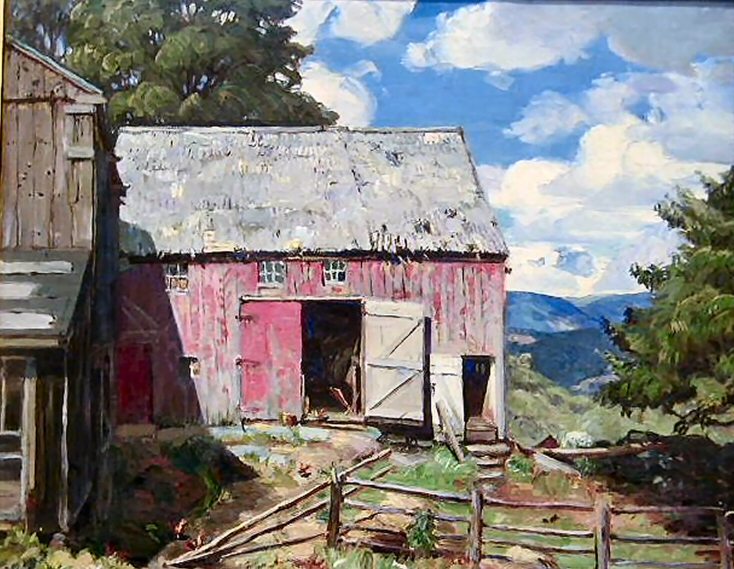 Barns Gallery to view related pieces.
Barns Gallery to view related pieces.
- See also the...
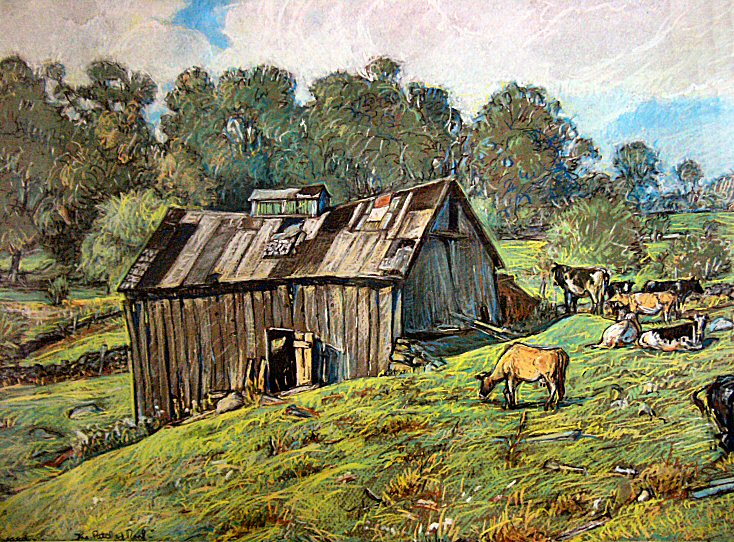 People & Livestock Gallery for related pieces.
People & Livestock Gallery for related pieces.
- See also the...
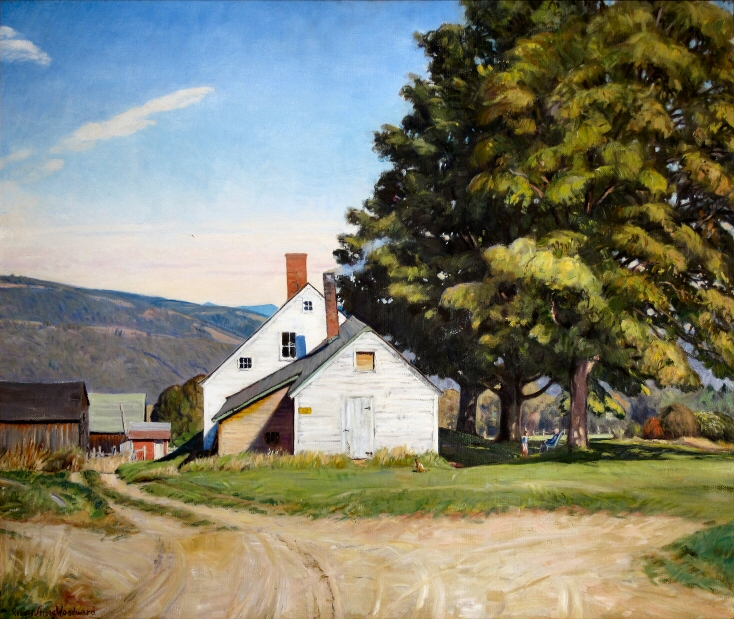 Late Summer Gallery to view related pieces.
Late Summer Gallery to view related pieces.
- See also the...
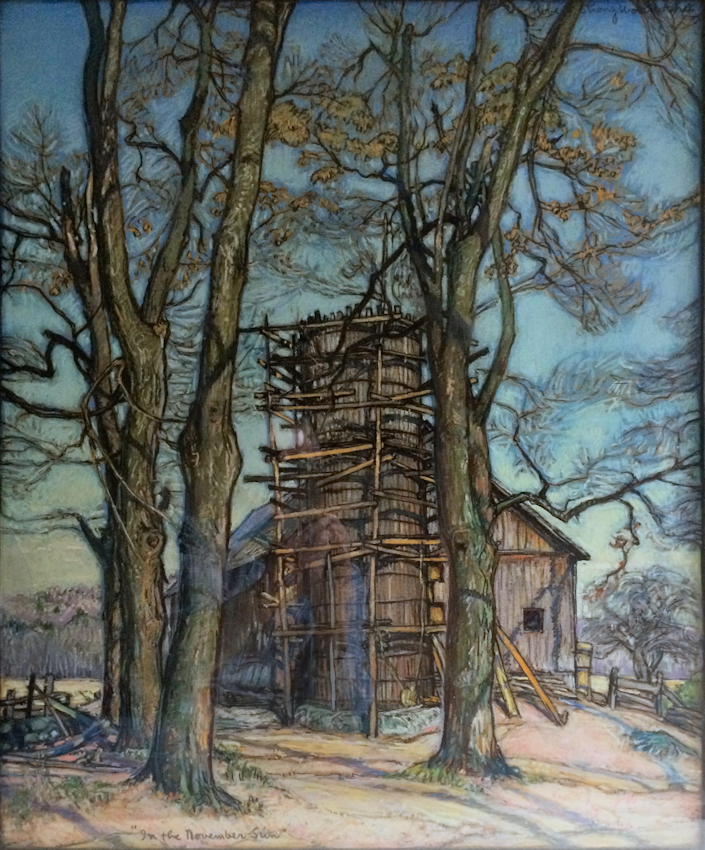 Chalks & Crayons Gallery to view other drawings
Chalks & Crayons Gallery to view other drawings
- See also the...
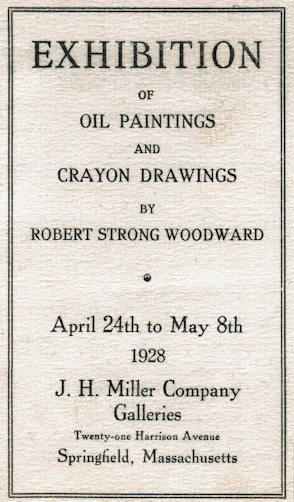 Exhibition List for a complete list of events
Exhibition List for a complete list of events
Deerfield Academy, 1932 other Chalk Drawings
Featured Artwork: When Corn Is Ripe
RSW's Diary Comments
⮞ Woodward did not keep records of his pastel paintings he called chalk drawings.

 The Springfield Union Republican, April 25, 1928
The Springfield Union Republican, April 25, 1928
by art critic Jeannette Matthews
Editor's Note:
This pastel is a one-of-a-kind painting in the artist repertoire. There is no
other even remotely similar. You would think Woodward made it just for his own personal collection
where it remains to this day. Yet still, it exhibited at two very important exhibitions for the
artist. The 1928 J.H. Miller exhibit is the first significant event at a gallery of its size and
volume to be hung at this point in his career -- 25 oil paintings and the most pastels ever to
display.
This exhibit would lead to the 36 piece show in Boston at the Myles Standish
Gallery in 1929, with the featured pastel only event at the Pynchon Gallery, also in Springfield,
to end the year, culminating in his gold medal in 1930 from the Boston Tercentennial Exhibit, and
his first one-man showing New Your City at the Grand Central Art Galleries in 1931, followed by
the 44 piece Tryon Gallery at Smith College. Nothing is the same for him after Miller.

 Interior of the Eglise Ste Gertrude, Louvain
Interior of the Eglise Ste Gertrude, Louvain
date unknown, 23.62" x 29.53"
Alfred Napoleon Delaunois (1875 - 1941)
The reviewer of the Miller show gives an extra-ordinary criticism of the artwork much to Woodward's liking (note the hand written comments above). But she says something of interest to us about the "crayons" as she calls them:
"The crayons are something comparatively new for Mr. Woodward... There is a man in Belgium, Delaunois, who has been doing crayons longer than Mr. Woodward and who gets that brushed quality in his crayon strokes, making cathedral interiors that were meant for prayer. It is a new idea to find them in a barnyard "
Ms. Matthews does not specifically name When Corn Is Ripe in the article, but does it matter looking at Delaunois's artwork to the left? Comparing the church interior to the painting above elevates the barn just as Matthews reasoned. Woodward could have named the pastel, "New England Church" and no one would bat an eye.
LG.png?url=photos/NonArtwork/Collégiale_Sainte-Gertrude_de_Nivelles(present)LG.png)
 The church of Delaunois pastel, Collégiale Sainte-Gertrude de Nivelles today. You can see the church has a new and old section. The row of arched windows in the lower left of the picture are likely the same as those in the scene.
The church of Delaunois pastel, Collégiale Sainte-Gertrude de Nivelles today. You can see the church has a new and old section. The row of arched windows in the lower left of the picture are likely the same as those in the scene.
Additional Notes

 Where the Stonewall Joins the Ledge, 1915
Where the Stonewall Joins the Ledge, 1915
Given as a wedding present to a family member two
years before he decided to paint for a living. It looks
no less than any other pastel he made as a pro.
⮝ Regarding what Ms. Matthews said about crayons being relatively new to the artist is not really
accurate. They are new to Ms. Matthews and Springfield. Woodward has been working in pastel long before he
decided to become a professional painter. We have examples of illuminations being made with pastel
(The Cello Song) as well as a pastel that predates his painting career
by two years and finally, his first professional exhibit in Boston was an oil and a pastel with the pastel
getting more praise in the newspapers.
There is something else going on at this time. From 1928 to 1930, Woodward makes twice as many chalk drawings
than oil paintings. We learn why in a May of 1928 profile on the artist, a month after the Miller event,
published in the Springfield Union and Republican newspaper. He tells the interviewer that he has been
suffering from neuropathy in his hands making it difficult to paint. In fact, he makes only 9 pieces of art
in 1930 that we know of. He does recover by 1931 and by 1933 is perhaps at the top of his game making a
number of his masterpieces in that year. In the end, we are told by
Dr. Mark that it was neuropathy that forces him to retire in 1951. His last known pastel is very similar
to his first seen above. It is named In the Summer Sun
---------------------------------------------------------------------------------------------------------------------------------
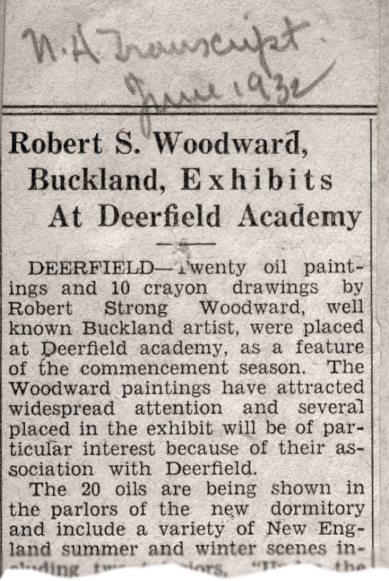
 North Adams Transcript, June 12932
North Adams Transcript, June 12932
Article on the Deerfield Dorm Exhibit.
Over the years we have learned to measure how Woodward felt about a particular painting by
where he exhibits it. For instance, if a painting hangs at the Williston Academy, the Myles Standish
Gallery and the Vallyhead Sanitarium it is much loved. Those locations have close personal connections
to Woodward. We know this is loved because he kept it for his private collection but he does bring it
out of retirement four years after hanging at Miller to hang at the Deerfield Academy and then again to
go to Valleyhead.
Deerfield would become very important to the artist as he would be a founding
member of the Deerfield Valley Art Association, as well as, a member of the oldest preservation society
in the country, the Pocumtuck Valley Memorial Association of Deerfield. We do not know the reason but
this exhibit of his work that hung in the brand new dormitory at the Deerfield Academy was very important
to Woodward. The year before, fourteen canvases hung in the Deerfield Inn near the schools campus and
perhaps that is what led to this event.
The respect between the school and Woodward was mutual.
The academy held two seperate memorial exhibitions honoring him and the second one in May of 1970 was the
result of the school's American Studies Group year long project to compile the first catalogue of the
artist's work and the first resource of this website.

.png)
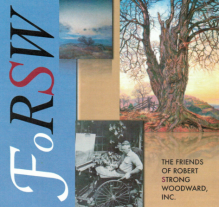
734.png)